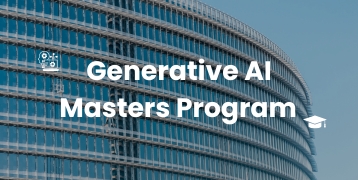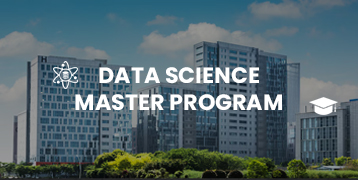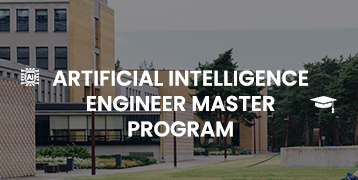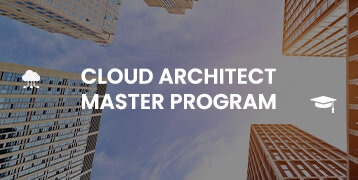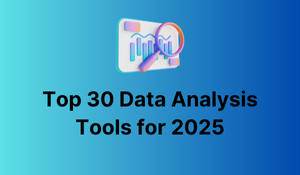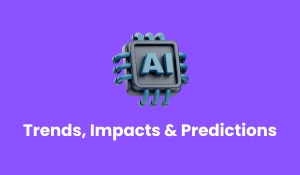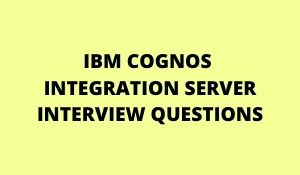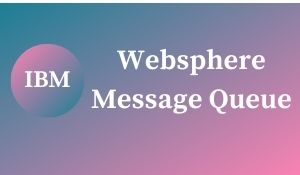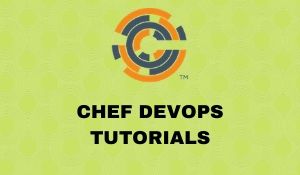
Chef is an open-source technology developed by way of Opscode. Adam Jacob, co-founder of Opscode is known as the founder of Chef. Chef is a device used for Configuration Management and is intently competing with Puppet. This technology uses Ruby encoding to improve primary building blocks like recipes and cookbooks.
Chef is used in infrastructure automation and helps in lowering manual and repetitive tasks for infrastructure management offers an ability to define infrastructure as code that can be deployed onto more than one server, which additionally includes automatic configuration and maintenance. Chef has obtained its very own convention for different building blocks, which are required to manipulate and automate infrastructure. Chef being a configuration management device achieves things, both in a physical data center and in the public cloud by taking the same software development strategy of managing things with the use of code. Hence Chef is popular using the tagline of “Infrastructure as Code”.The important advantage of the usage of a configuration management device like Chef is the fact that the complete infrastructure blueprint can be documented, created, and utilized in any number of environments. This method saves a lot of time and effort, and can additionally prevent human errors.
THIS CHEF TUTORIAL WILL HELP YOU LEARN ABOUT:
CHEF
WHY DO WE USE
FEATURES
RELATED TECHNOLOGIES
CHEF ARCHITECTURE, COMPONENTS
CHEFSERVER
WORKSTATIONS
NODES
ADVANTAGES AND DISADVANTAGES
CHEF
Chef is an automation device that affords a way to outline infrastructure as code.
Infrastructure as code (IAC) certainly means managing infrastructure by way of writing code (Automating infrastructure) alternatively than the usage of manual processes. Chef makes use of a pure-Ruby, domain-specific language (DSL) for writing device configurations. The types of automation achieved using Chef are:
- Infrastructure configuration
- Application deployment
- Configurations are managed throughout your network
WHY CHEF
Chef is a configuration management technology used to automate infrastructure provisioning. It is developed on the foundation of Ruby DSL language. It is used to streamline the undertaking of configuration and managing the company’s server. It has the functionality to get built-in with any of the cloud technology. You can configure thousands of nodes within minutes with the use of Chef. The chef will not only automate things, But it will hold the systems underneath consistent checks, and affirm that the device is configured the way it is required (The chef agent/client does this job). If any individual makes a mistake in modifying a file, the chef will correct it.
In DevOps, we use Chef to set up and control servers and functions in-house and on the cloud.
FEATURES OF CHEF
Following are the most distinguished aspects of Chef −
- Chef is best for deploying and managing the cloud server, storage, and software.
- The chef is best for continuous deployment.
- Chef transforms the infrastructure into code.
- Chef helps more than one platforms like Arch, Debian, and Fedora.
- Chef is relatively scalable, secure, and fault-tolerant.
- Chef has an active smart and exquisite community support.
- The chef can function in a allotted stand-alone or a centralized mode requiring a server.

CHEF − RELATED TECHNOLOGIES
Following is the listing of Chef associated technologies.
Puppet
Puppet presents a standard way of delivering and working software, no matter where it runs. It is an automated administrative engine for Linux, Unix, and Windows devices that performs administrative tasks primarily based on centralized specifications.
The most important elements of Puppet are as follows −
- Implementing new structures with a uniform configuration.
- Updating the systems and upgrading the security and software packages.
- Customizing configurations to ensure the availability of information sources.
- Optimizing the accessible resources and minimizing the cost.
- Simplifying the roles and enabling the team to focus on core and productive issues.
Ansible
Ansible is a radically simple IT automation platform that makes your functions and systems simpler to deploy. Avoid writing scripts or customized code to install and replace your applications — automate in a language that approaches simple English, the usage of SSH, with no agents to set up on remote systems.
The main features of Ansible are as follows −
Simple and convenient to learn
Written in Python
Agentless
YAML-based Playbooks
Ansible galaxy
| Learn more information from the GoLogica “Chef DevOps Training“ |
SaltStack
SaltStack is used for data-driven configuration. It is a new method of infrastructure management built on a dynamic communication bus. Useful for data-driven, remote execution for any infrastructure, and configuration management for any app stack.
Fabric
Fabric is a Python-based programming language, which is developed as an API of Python that wants to be imported into Python code to configure and manage an infrastructure.
CHEF ARCHITECTURE
Chef has three core aspects which are stated below:
- Chef Server: This central server holds all configuration information that the nodes will use for configuration.
- Workstation: This machine holds all the configuration information that can later be pushed to the central chef server. Several chef command-line utilities will be reachable in this system, which can be used to engage with nodes, replace configurations, etc. This is the region from which most of the work takes place on a day to day basis.
- Note: This is nothing but a consumer server/system that will be registered to the central chef server, from the place it can pull configuration information that wants to be applied.
- Central Chef Server
This is a centrally placed server that holds all details associated with chef infrastructure. These details consist of full metadata of all the consumers that are automated through Chef. All configurations are relevant to distinct clients in the architecture.
Chef runs in a server-client model. Each node has a chef customer software program installed, which will pull down the configuration that is relevant to that node from the central chef server.
The central chef server has an elective web interface that gives quite a few administrative skills to customers managing chefs. Nodes can be deleted and configurations relevant to a node can be modified with the use of this central web interface.
There are three special sorts of chef-server available.
Chef Solo: Chef-solo is not a chef server. It eliminates the need to have a central chef server to check configurations on nodes.
Open Source Chef: This is a free and open-source chef, which you can deploy anywhere.
Hosted Chef: This is paid, where the postcode will control your central chef server, which you can access/configure the usage of the web interface. This makes you free from the responsibility of managing a central chef server yourself.

- Workstation
Consider a workstation as a device that can be used to manipulate the central chef server. As depicted in the above diagram, there can be more than one workstation that can collectively control a central chef server.
Writing cookbooks and recipes that will later be pushed to the central chef server.
A cookbook is nothing however a unit that configures a precise component on the node. Consider cookbooks as something that is designed to manipulate one precise component, provider, or application on the nodes. Let’s take an instance of installing and configuring a MySQL database server on a node. In that case, you will have a cookbook for MySQL, that will take care of installing the required version, making use of the required configuration parameters in MySQL configuration files, including users into MySQL, developing required databases, etc. In short, all elements of a specific issue that want to be configured on the node can be placed inside a cookbook.
Managing Nodes on the central chef server.
The workstation device will have the required command-line utilities, to control and manage every factor of the central chef server. Things like including a new node to the central chef server, deleting a node from the central chef server, enhancing node configurations and so on can all be managed from the workstation itself.

The workstation will have two predominant components.
- Knife utility: This command-line device can be used to communicate with the central chef server from the workstation. Adding, removing, and altering configurations, of nodes in the central chef server will be carried out through the use of this knife utility.
Cookbooks can be uploaded to the central chef server using Knife Utility, and Roles and environments can be managed using Knife Utility. Every factor of the central chef server can be managed from a workstation using knife utility.
- A local Chef repository: This is the area where each configuration aspects of the central chef server are stored. This chef repository can be synchronized with the central chef server (again the usage of the knife utility itself.)
- Chef Nodes
They are the actual machines that are going to be managed through the Chef server. All the nodes can have distinct sorts of setups as per requirement. Chef client is the key element of all the nodes, which helps in setting up the communication between the Chef server and Chef node. The different component of the Chef node is Ohai, which helps in getting the current state of any node at a given point in time.
Chef Client performs the following functions:
- It is responsible for interacting with the central Chef Server.
- It manages the preliminary registration of the Node to the central Chef Server.
- It pulls down Cookbooks, and applies them on the Node, to configure it.
- Periodic polling of the central Chef Server to fetch new configuration items if any.
ADVANTAGES OF CHEF
Chef gives the following benefits:
- A lower barrier for entry − As Chef makes use of the native Ruby language for configuration, a standard configuration language it can be easily picked up using anybody having some development experience.
- Excellent integration with the cloud − Using the knife utility, it can be effortlessly integrated with any of the cloud technologies. It is the quality device for an organization that desires to distribute its infrastructure in a multi-cloud environment.
- Fully automatic deployment.
- Integrate with a cloud-based platform like AWS.
- The chef maintains the device under a steady check.
- You can report the whole infrastructure in the form of a chef repository.
- The chef performs a fundamental function in the DevOps software lifecycle
DISADVANTAGES OF CHEF
Some of the primary drawbacks of Chef are as follows −
- The way cookbooks are controlled. It needs consistent babying so that people who are working do not mess up with other cookbooks.
- Only Chef Solo is available.
- Lacking documentation.
- Chef needs code primarily based knowledge for scripting the device which makes it complicated.
The master node can only be configurable in the Linux\ Unix platform.
Related Articles:
🎯 Comparison between DevOps and SysOps
🎯 Top 10 DevOps Tools You Must Know In 2025
🎯 Why Learn DevOps With AWS
🎯 AWS DevOps Interview Questions and Answers Updated 2025
🎯 DevOps Interview Questions and Answers
🎯 Saltstack Tutorial
🎯 An Introduction to Ansible

